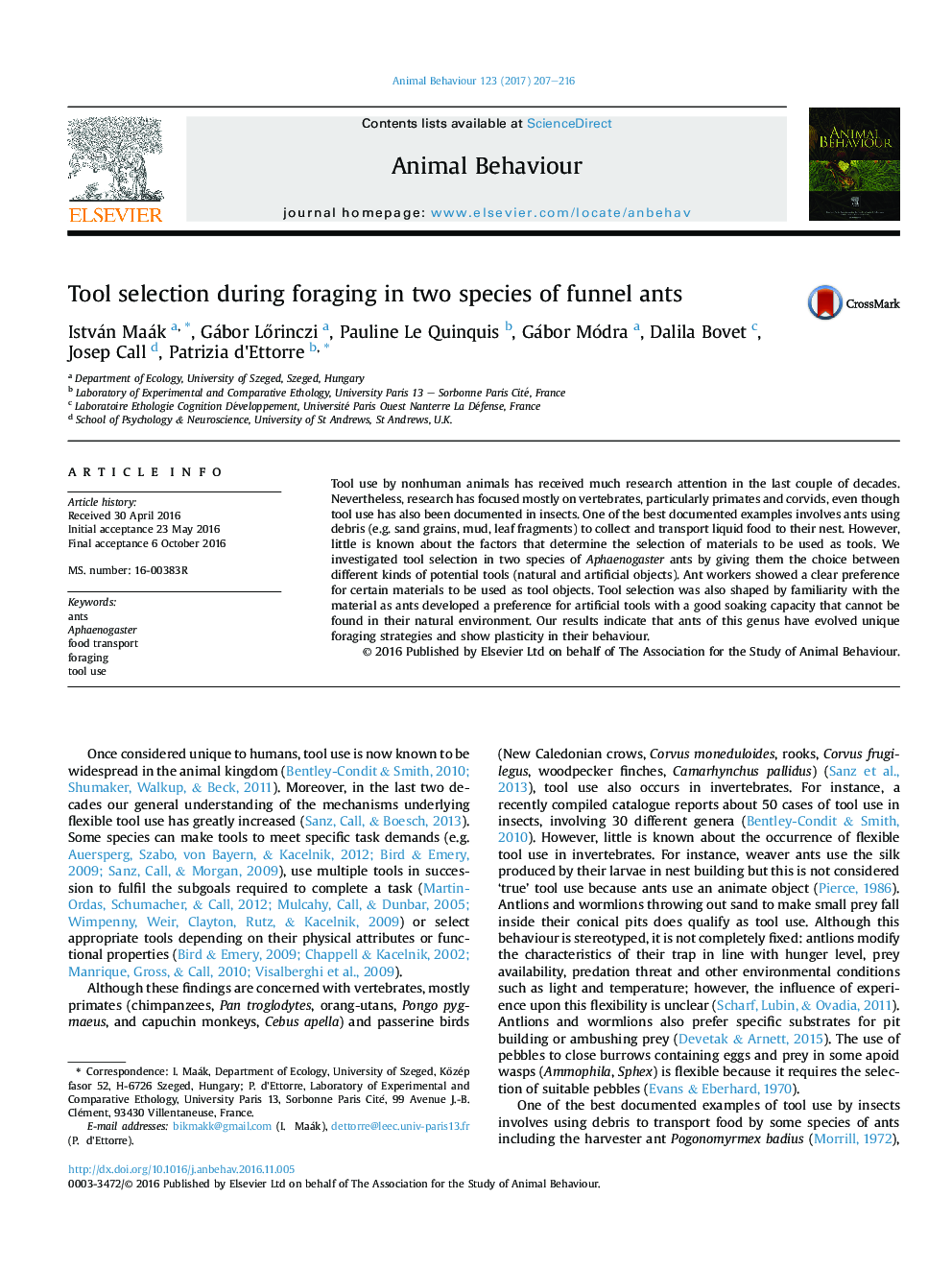| Article ID | Journal | Published Year | Pages | File Type |
|---|---|---|---|---|
| 5538585 | Animal Behaviour | 2017 | 10 Pages |
Abstract
Tool use by nonhuman animals has received much research attention in the last couple of decades. Nevertheless, research has focused mostly on vertebrates, particularly primates and corvids, even though tool use has also been documented in insects. One of the best documented examples involves ants using debris (e.g. sand grains, mud, leaf fragments) to collect and transport liquid food to their nest. However, little is known about the factors that determine the selection of materials to be used as tools. We investigated tool selection in two species of Aphaenogaster ants by giving them the choice between different kinds of potential tools (natural and artificial objects). Ant workers showed a clear preference for certain materials to be used as tool objects. Tool selection was also shaped by familiarity with the material as ants developed a preference for artificial tools with a good soaking capacity that cannot be found in their natural environment. Our results indicate that ants of this genus have evolved unique foraging strategies and show plasticity in their behaviour.
Keywords
Related Topics
Life Sciences
Agricultural and Biological Sciences
Animal Science and Zoology
Authors
István Maák, Gábor LÅrinczi, Pauline Le Quinquis, Gábor Módra, Dalila Bovet, Josep Call, Patrizia d'Ettorre,
